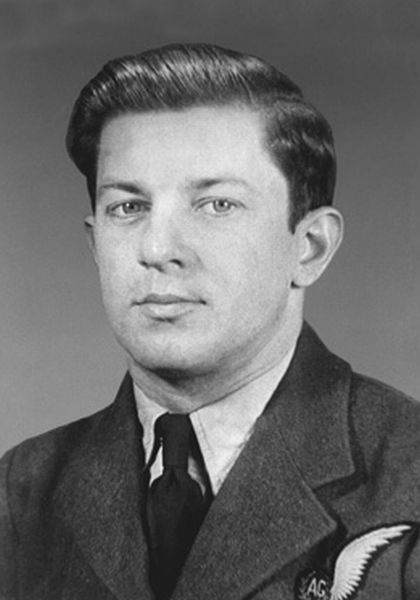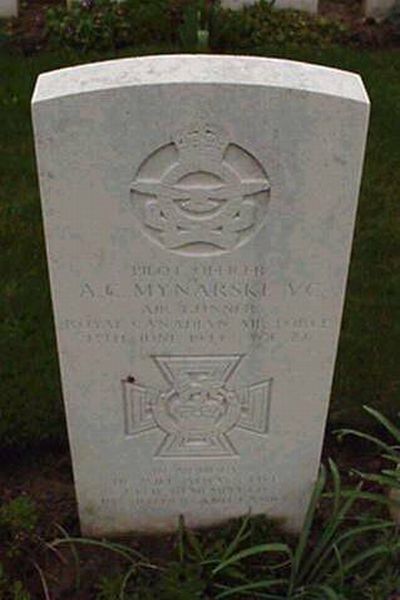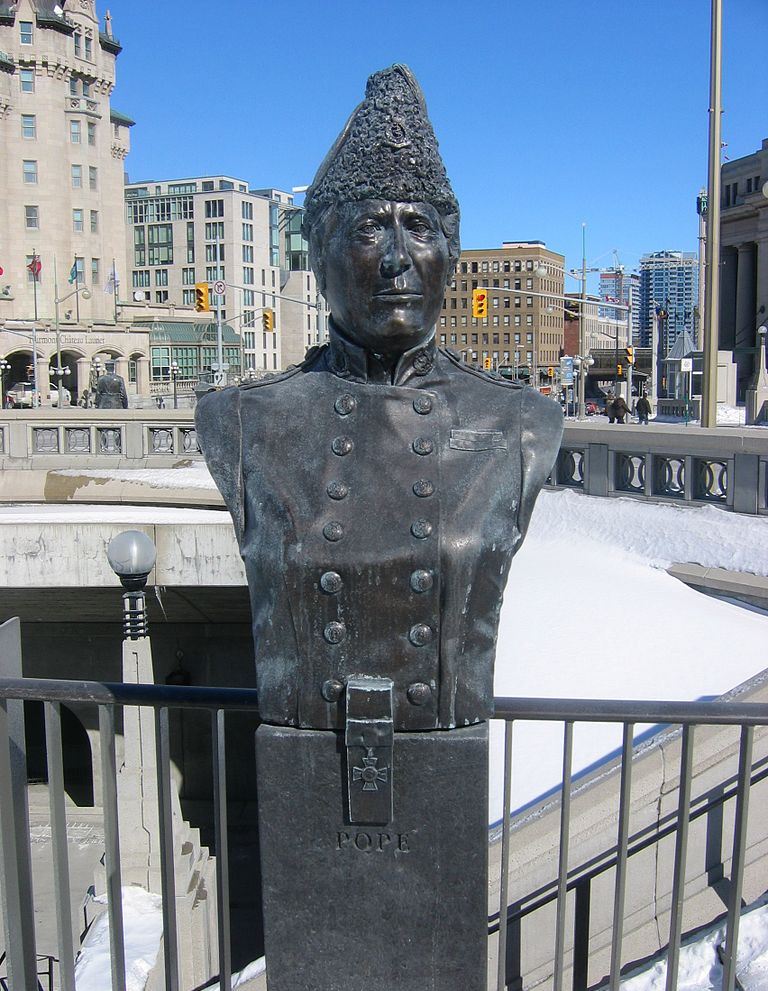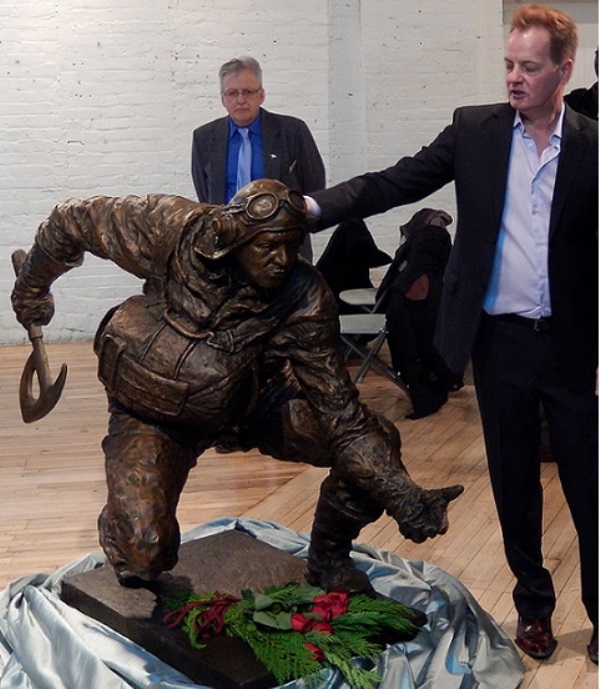Mynarski, Andrew Charles "Andy"
- Date of birth:
- October 14th, 1916 (Winnipeg/Manitoba, Canada)
- Date of death:
- June 13th, 1944 (Cambrai, France)
- Buried on:
- Commonwealth War Graves Meharicourt
Plot: Brit.. Grave: 20. - Service number:
- J.87544
- Nationality:
- Canadian (1931-present, Constitutional Monarchy)
Biography
Andrew Charles Mynarski joined the army in 1940 and soon transferred to the air force where he was trained as an air gunner in a bomber. In 1942, his squadron left for England.
On 13 June 1944, he flew a mission over France as a mid-upper gunner in a Lancaster bomber of the 419th squadron of the Canadian Royal Air Force. During this flight, the Lancaster was attacked by a Ju 88 night fighter and caught fire. The crew was ordered to abandon the plane but Mynarski discovered tail gunner Pat Brophy trapped in his turret . He made his way through the burning plane to rescue him. He did not succeed and after several unsuccessful attempts, Mynarski left the plane while his flight suit and parachute were on fire. He hit the ground hard and still burning, but alive. A few days later, he died as a result of severe burns in a hospital.
Andrew Minarski received the Victoria Cross for his brave performance posture.
Do you have more information about this person? Inform us!
- Period:
- Second World War (1939-1945)
- Rank:
- Pilot Officer
- Unit:
- No. 419 (Moose) Squadron, Royal Canadian Air Force
- Awarded on:
- October 11th, 1946
"Pilot Officer Mynarski was the mid-upper gunner of a Lancaster aircraft, detailed to attack a target at Cambrai in France, on the night of 12th June, 1944. The aircraft was attacked from below and astern by an enemy fighter and ultimately came down in flames. As an immediate result of the attack, both port engines failed. Fire broke out between the mid-upper turret and the rear turret, as well as in the port wing. The flames soon became fierce and the captain ordered the crew to abandon the aircraft.
Pilot Officer Mynarski left his turret and went towards the escape hatch. He then saw that the rear gunner was still in his turret and apparently unable to leave it. The turret was, in fact, immovable, since the hydraulic gear had been put out of action when the port engines failed, and the manual gear had been broken by the gunner in his attempts to escape.
Without hesitation, Pilot Officer Mynarski made his way through the flames in an endeavour to reach the rear turret and release the gunner. Whilst so doing, his parachute and his clothing, up to the waist, were set on fire. All his efforts to move the turret and free the gunner were in vain. Eventually the rear gunner dearly indicated to him that there was nothing more he could do and that he should try to save his own life. Pilot Officer Mynarski reluctantly went back through the flames to the escape hatch. There, as a last gesture to the trapped gunner, he turned towards him, stood to attention in his flaming clothing and saluted, before he jumped out of the aircraft. Pilot Officer Mynarski's descent was seen by French people on the ground. Both his parachute and clothing were on fire. He was found eventually by the French, but was so severely burned that he died from his injuries.
The rear gunner had a miraculous escape when the aircraft crashed. He subsequently testified that, had Pilot Officer Mynarski not attempted to save his comrade's life, he could have left the aircraft in safety and would, doubtless, have escaped death.
Pilot Officer Mynarski must have been fully aware that in trying to free the rear gunner he was almost certain to lose his own life. Despite this, with outstanding courage and complete disregard for his own safety, he went to the rescue. Willingly accepting the danger, Pilot Officer Mynarski lost his life by a most conspicuous act of heroism which called for valour of the highest order."
- Period:
- Second World War (1939-1945)
Sources
- Photo: Tom MacNeill
- Peter Bennett (grave) - - Monument on former RAF Middleton (now Tees Valley Airport).
- Victoria Cross Reference
- The Register of the Victoria Cross - uitgegeven door This Engeland 1997 - ISBN 0906324270









